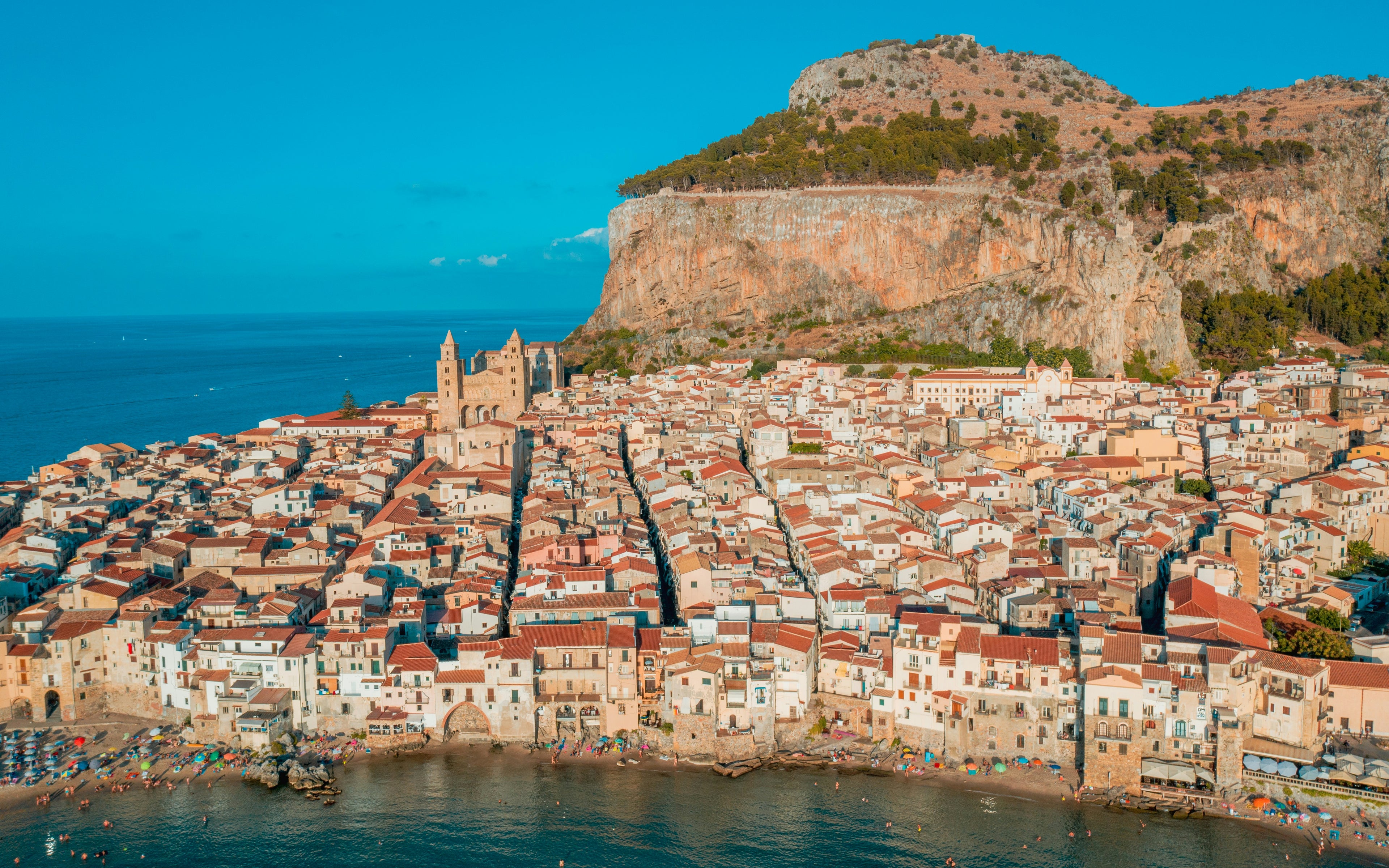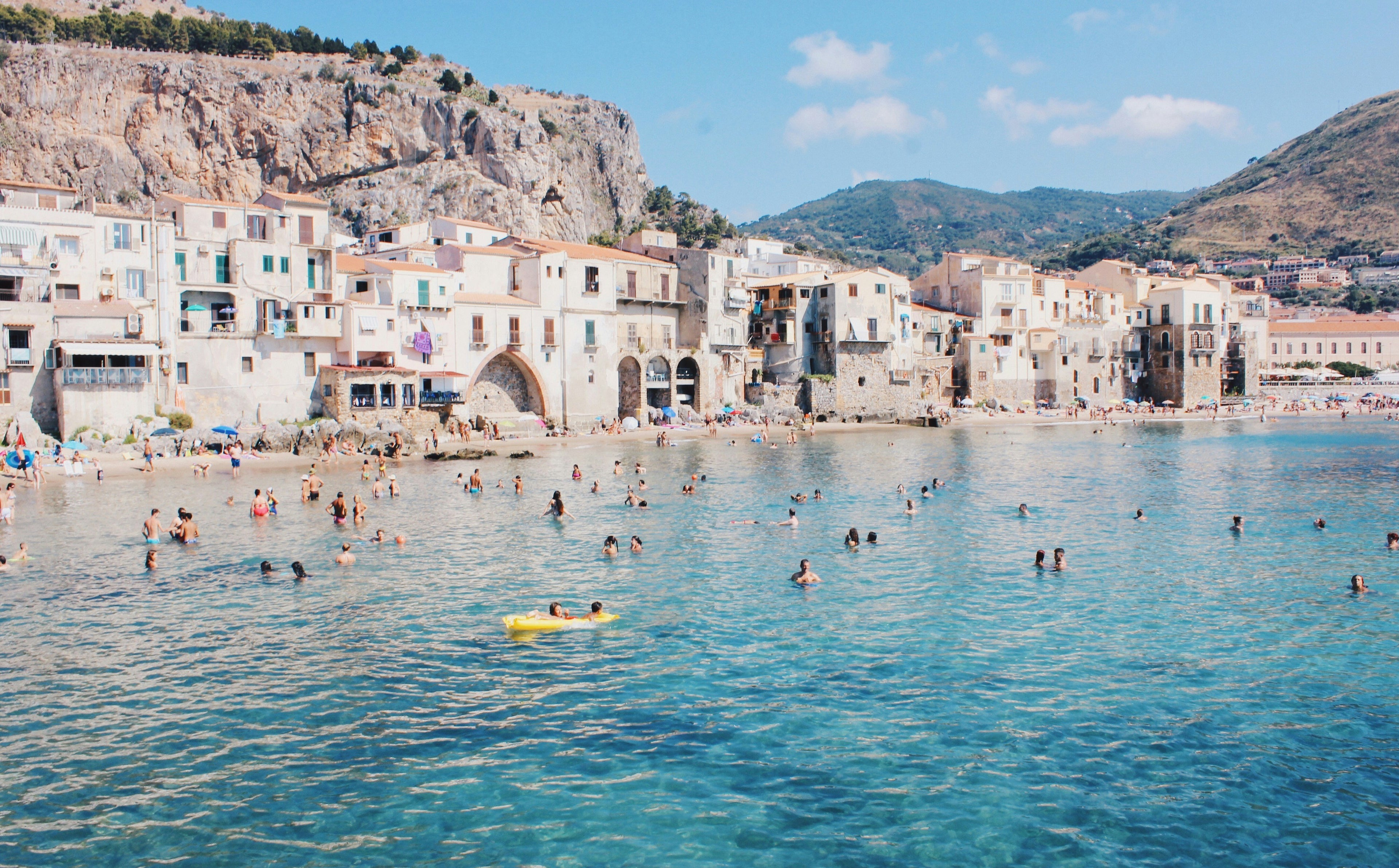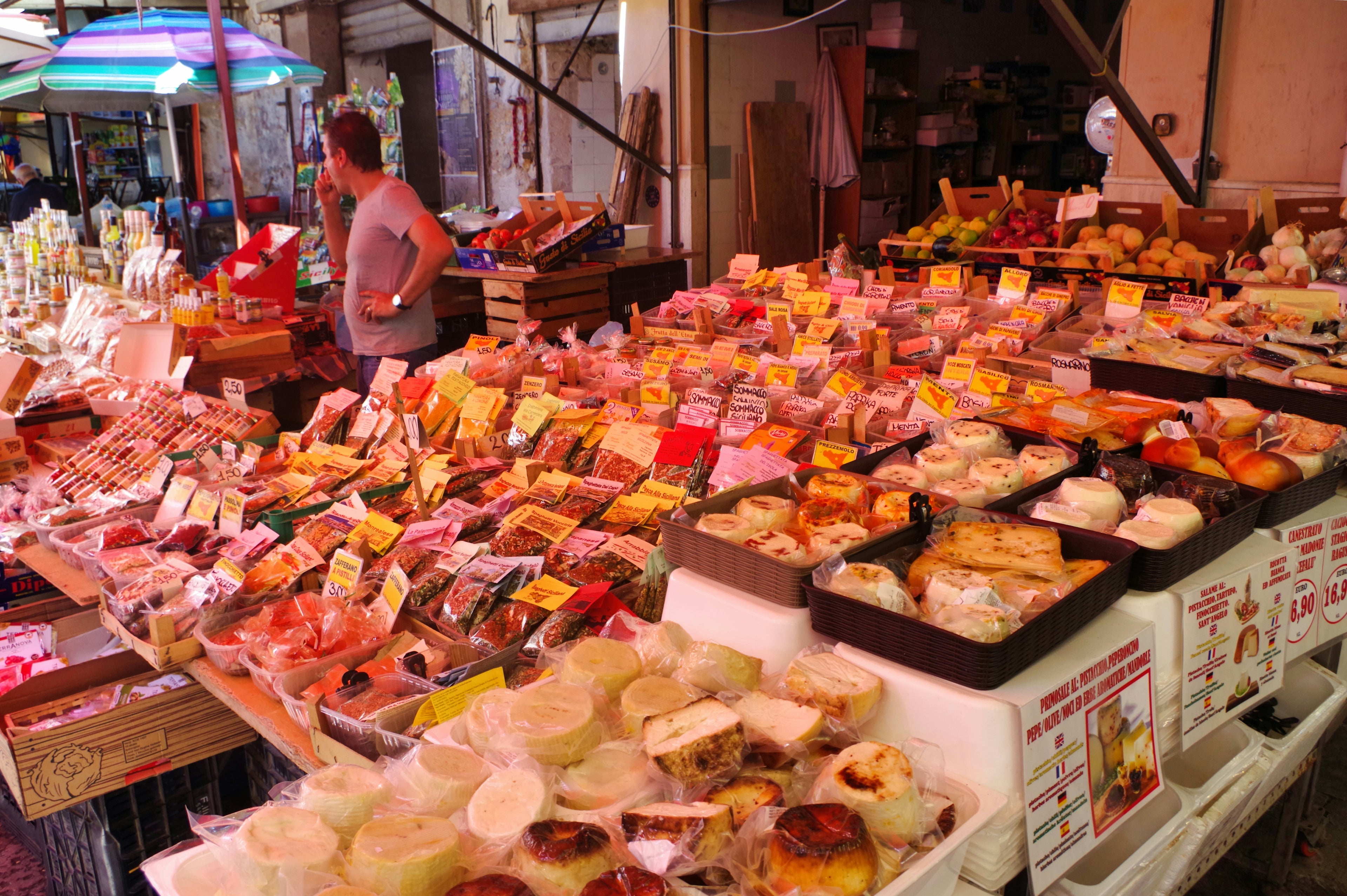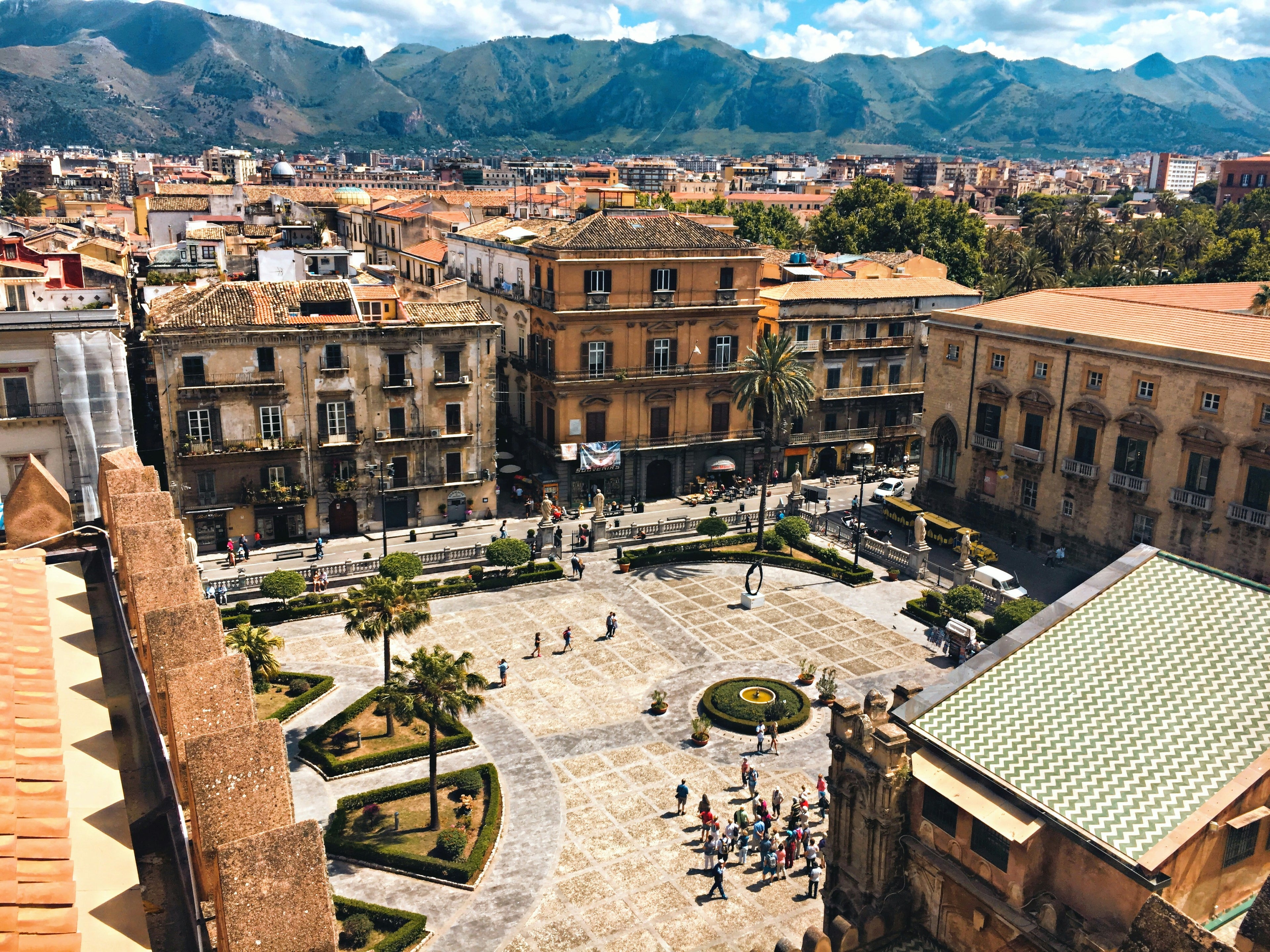
Italian Summer: Sicily
When you think of summer in Italy, what comes to mind? Is it the crystal-clear waters of Sicily’s beaches, the rugged beauty of Mount Etna, or the charming streets of Palermo? Whatever your vision may be, one thing is certain—Sicilian summers are a vibrant celebration of culture, cuisine, and natural beauty.
Cefalù, Province of Palermo, Italy
Cefalù, a stunning coastal town located in the Province of Palermo, Sicily, is one of Italy's hidden gems. Nestled between the shimmering waters of the Tyrrhenian Sea and the towering Rocca di Cefalù, this charming town offers a unique blend of history, culture, and natural beauty. Whether you’re a history enthusiast, a foodie, or simply looking for a relaxing beach getaway, Cefalù has something for everyone.
The History and Architecture of Cefalù
Cefalù’s history dates back to ancient times, and this rich past is reflected in its impressive architecture. The crown jewel of the town is the Cefalù Cathedral, a UNESCO World Heritage site and a masterpiece of Norman architecture. Built in the 12th century by King Roger II, the cathedral’s stunning mosaics, including a depiction of Christ Pantocrator, are not to be missed. As you wander through the narrow streets of Cefalù, you’ll also encounter other historical landmarks such as the Osterio Magno, a medieval palace that once served as the residence of the Norman kings.
A Coastal Paradise: Beaches in Cefalù
Cefalù is renowned for its beautiful beaches, making it a perfect destination for those seeking sun and sea. The Lungomare di Cefalù, the town’s main beach, features golden sand and crystal-clear waters, ideal for swimming and sunbathing. It’s also family-friendly, with plenty of nearby cafes and restaurants offering fresh seafood and local delicacies. For a more secluded experience, head to Caldura Beach, located just outside the town. This rocky beach is perfect for snorkeling and exploring the underwater beauty of the Mediterranean.
Exploring the Rocca di Cefalù
Adventure seekers will love hiking up the Rocca di Cefalù, the towering rock that overlooks the town. The hike takes about an hour and offers breathtaking panoramic views of the coastline and the town below. Along the way, you’ll encounter ancient ruins, including the Temple of Diana, a megalithic structure believed to date back to the 9th century BC. Reaching the summit rewards you with not only stunning views but also a sense of connection to the ancient civilizations that once inhabited the area.
Sicilian Cuisine in Cefalù
No trip to Cefalù would be complete without indulging in the local Sicilian cuisine. From fresh seafood dishes to traditional street food, Cefalù is a food lover’s paradise. Be sure to try pasta alla norma, a dish made with eggplant, tomatoes, and ricotta salata, and arancini, fried rice balls stuffed with various fillings like ragù or mozzarella. For dessert, don’t miss out on cannoli, a crispy pastry filled with sweet ricotta cheese, or granita, a refreshing slushy treat perfect for hot summer days.


Palermo, Sicily, Italy
Palermo, the vibrant capital of Sicily, is a city where history, art, and culture collide. From its stunning architecture and world-renowned street food to its bustling markets and ancient ruins, Palermo offers an unforgettable experience for travelers. Whether you're a history buff, foodie, or beach lover, Palermo is packed with must-see sights and activities that capture the essence of Sicilian life.
A Journey Through Palermo’s History and Architecture
Palermo’s rich history spans over 2,700 years, with influences from the Phoenicians, Romans, Byzantines, Arabs, Normans, and Spanish. This diverse heritage is reflected in the city’s incredible architecture. One of Palermo’s most iconic landmarks is the Palermo Cathedral, a UNESCO World Heritage Site, combining Gothic, Norman, and Baroque styles. Don’t miss the Palatine Chapel, located within the Palazzo dei Normanni (Norman Palace), famous for its exquisite mosaics and stunning blend of Byzantine and Islamic artistry.
Another must-visit site is the Church of San Giovanni degli Eremiti, with its distinctive red domes that highlight Palermo's Arab-Norman past. For art enthusiasts, the Teatro Massimo, Italy’s largest opera house, is a masterpiece of neoclassical architecture and a cultural hub for performances year-round.
Palermo’s Bustling Markets and Street Food Scene
Palermo is world-famous for its vibrant markets and unbeatable street food, making it a top destination for culinary explorers. The city's markets—Ballarò, Vucciria, and Mercato del Capo—are lively, colorful places where locals shop for fresh produce, seafood, and traditional Sicilian delicacies.
A visit to Palermo isn’t complete without indulging in its street food. Start with arancini, delicious fried rice balls stuffed with ragù, cheese, or peas, or panelle, crispy chickpea fritters often served in a sandwich. Don’t forget to try sfincione, Palermo’s take on pizza, topped with tomatoes, onions, and anchovies. For dessert, indulge in cannoli, crispy pastry shells filled with sweet ricotta, or cassata, a rich cake made with marzipan, ricotta, and candied fruit.
Exploring Palermo’s Cultural Treasures
Palermo is a treasure trove of art and culture. The Regional Archaeological Museum offers fascinating insights into Sicily's ancient civilizations, with exhibits ranging from Greek artifacts to Roman mosaics. Art lovers should also visit the Galleria d'Arte Moderna, which showcases works by Italian and Sicilian artists, as well as the Oratorio di San Lorenzo, home to intricate stucco work by Giacomo Serpotta.
For those looking to experience Palermo’s religious heritage, the Catacombs of the Capuchins offer a unique, if eerie, glimpse into the city’s past. These underground burial chambers house over 8,000 mummified bodies, many dating back to the 16th century.




Tell your brand's story through images
Taormina, Sicily, Italy
Perched high above the Ionian Sea, Taormina is one of Sicily's most picturesque and enchanting destinations. Known for its stunning coastal views, historic ruins, and vibrant cultural scene, Taormina is a must-visit town for anyone exploring Sicily. This charming hilltop town has attracted artists, writers, and travelers for centuries, offering a perfect blend of natural beauty, history, and relaxation.
The History and Architecture of Taormina
Taormina has a rich history that dates back to the ancient Greeks and Romans. One of the most iconic landmarks in the town is the Ancient Theatre of Taormina (Teatro Antico di Taormina), a remarkably well-preserved Greek amphitheater with breathtaking views of the sea and Mount Etna. Originally built in the 3rd century BC, the theater is still in use today for concerts, performances, and the famous Taormina Film Festival. The panoramic backdrop of the theater, with the smoking peak of Mount Etna in the distance, makes it one of the most scenic performance venues in the world.
As you wander through the town, you’ll discover medieval architecture and narrow, winding streets lined with vibrant bougainvillea and charming shops. The Palazzo Corvaja, a 10th-century fortress turned museum, is another historical gem, reflecting Taormina's Arab, Norman, and Gothic influences. The Duomo di Taormina, a 13th-century cathedral located in the town’s main square, Piazza Duomo, is a simple yet beautiful example of Sicilian medieval architecture.
The Beauty of Taormina’s Coastline
One of Taormina’s biggest draws is its proximity to some of Sicily’s most beautiful beaches. Take the funicular from the town down to Isola Bella, a small island connected to the mainland by a narrow strip of sand. This nature reserve is known for its crystal-clear waters, making it perfect for swimming, snorkeling, and sunbathing. The pebbly beach and surrounding coves create a tranquil escape, and you can even take a boat tour to explore nearby grottos and hidden bays.
For a more expansive beach experience, head to Mazzarò Beach, a short distance from Isola Bella. This beach is popular for its vibrant atmosphere and range of beachside restaurants and cafes. Whether you’re looking for a day of relaxation or water sports like kayaking and paddleboarding, Taormina’s coastline offers something for everyone.
